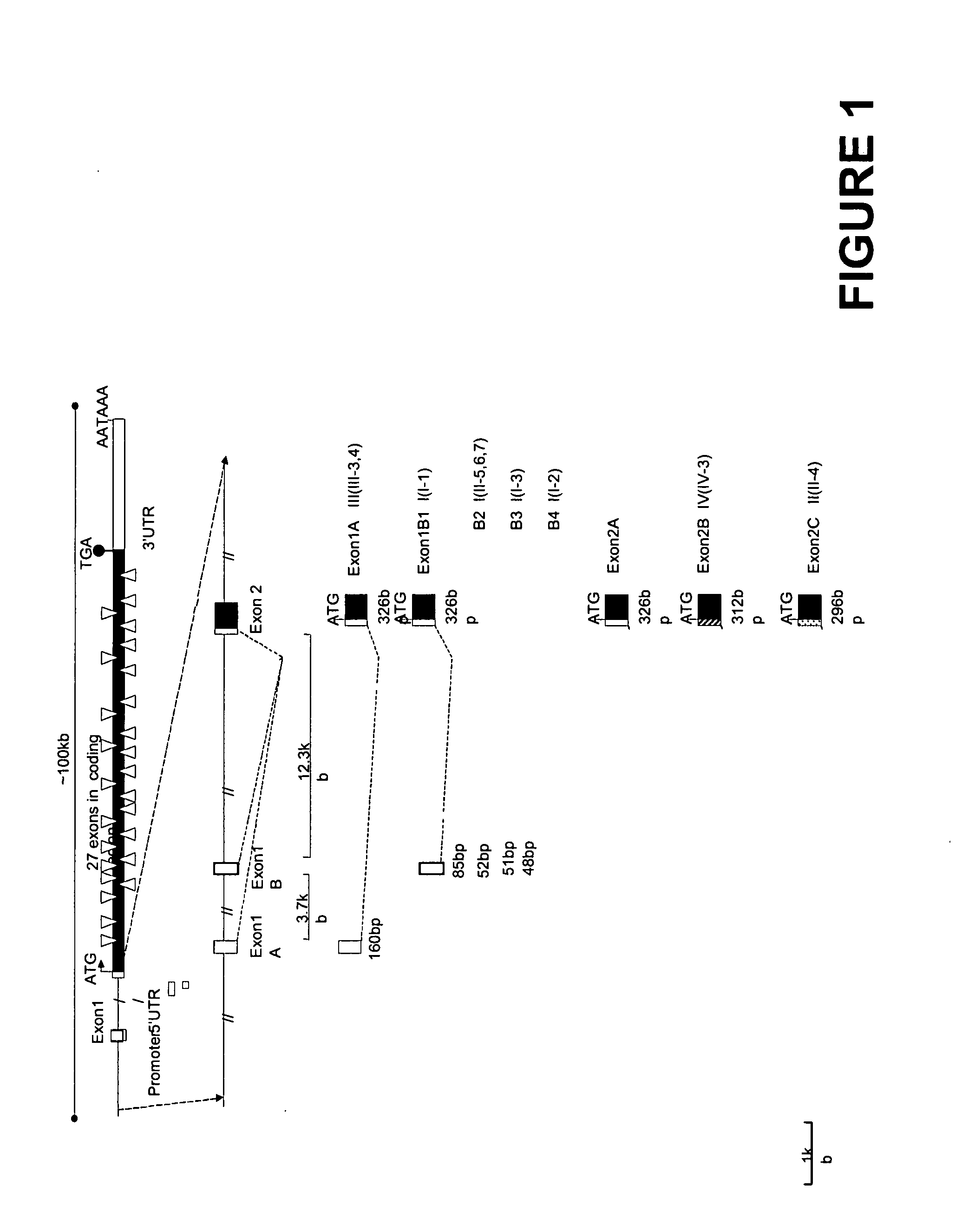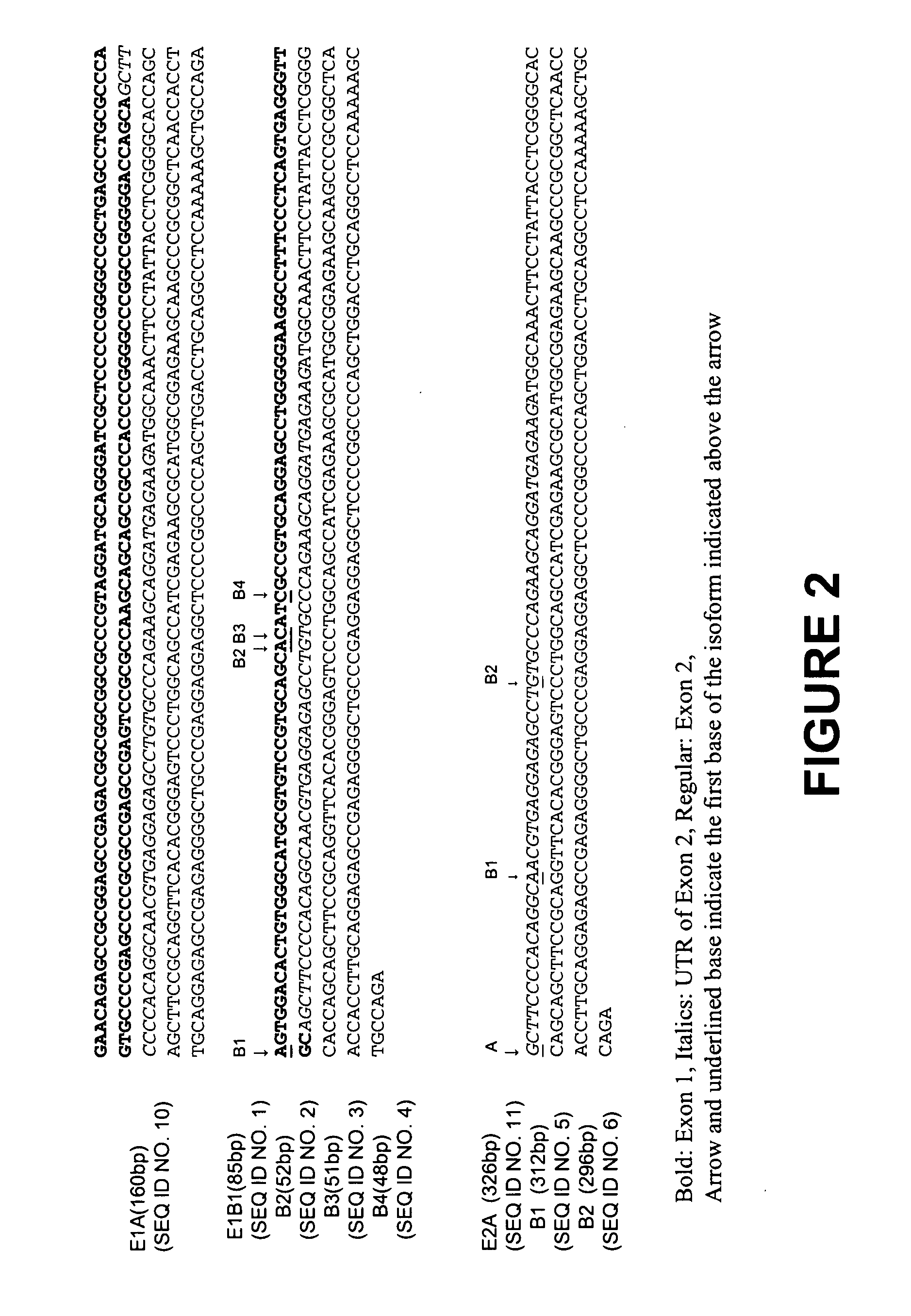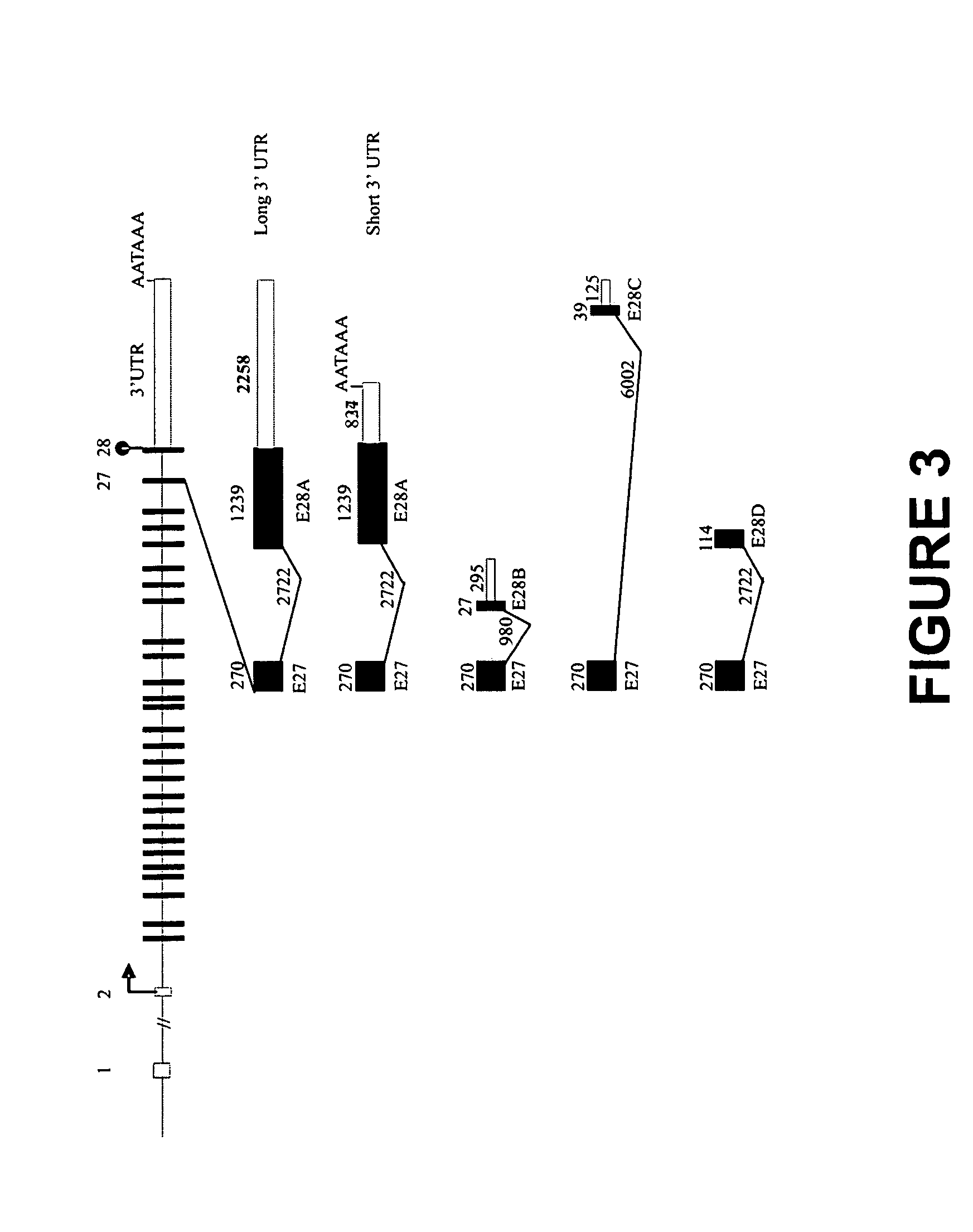Human sodium channel isoforms
a sodium channel and isoform technology, applied in the field of human sodium channel isoforms, can solve problems such as and achieve the effect of increasing the risk of heart diseas
- Summary
- Abstract
- Description
- Claims
- Application Information
AI Technical Summary
Benefits of technology
Problems solved by technology
Method used
Image
Examples
example 1
[0055] The human heart tissue from fetal and adult was homogenized, and total RNA isolated using the RNeasy Mini kit following the manufacturer's instructions (Qiagen, Valencia, Calif.). RNA ligase-mediated-rapid amplification cDNA ends (RLM-RACE) methods were used to characterize the 5′ and 3′ ends of the human SCN5A mRNA using GeneRacer kit (Invitrogen, Carlsbad, Calif.). Briefly, 1 μg total RNA was treated with calf intestinal phosphatase to remove the 5′ phosphates of the truncated mRNA and non-mRNA forms of total RNA. Tobacco acid pyrophosphatase was used to remove the 5′ cap structure from intact, full-length mRNA, and T4 RNA ligase was use to add the GeneRacer RNA Oligo to the 5′ end of the mRNA. The first-strand cDNA was synthesized by SuperScript II reverse transcriptase using a reverse gene specific primer GSP5′ (5′CATCTTCCGGTTCAGTGCCACCA 3′ (SEQ ID NO: 14)) complementary to exon 3 of human SCN5A gene and the GeneRacer Oligo dT primer at the 5′ and 3′ ends, respectively. T...
example 2
Methods
[0059] Detection of Human SCN5A 3′UTR Isoforms by RACE-PCR
[0060] Total human RNA from normal fetal and adult whole hearts was purchased from Clontech (Mountain View, Calif.). The RNA ligase-mediated rapid amplification of cDNA ends (RLM-RACE) method was used to characterize the 3′ ends of the human SCN5A mRNA using the GeneRacer kit (Invitrogen, Carlsbad, Calif.). Briefly, 1 μg total RNA was used to synthesize first-strand cDNA by SuperScript II reverse transcriptase using the GeneRacer Oligo dT primer at the 3′ ends. The 3′ ends PCR reactions were performed with Platinum Pfx DNA polymerase using 10 μM of a forward gene-specific primer (GSP) HE26F (5′ CATCCCACGGCCCCTGAACAAGTA 3′ (SEQ ID NO. 16)) complementary to exon 26 of human SCN5A gene and the GeneRacer 3′ primer for amplifying the 3′ end fragment. An additional PCR reaction with a nested GSP primer HE27F (5′ CTGCGCCACTACTACTTCACCAACA 3′ (SEQ ID NO. 17)) corresponding to exon 27 of human SCN5A gene and a nested GeneRac...
example 3
Methods
[0093] Cell Culture and Cell Viability Assay
[0094] The rat embryonic cardiomyocyte cell line, H9c2 (ATCC cat # CRL-1446), or acutely isolated neonatal rat heart cardiomyocytes were used. Rat neonatal ventricular cells were isolated from 3-day-old Sprague-Dawley rats (Charles River Laboratories Wilmington, Mass.) using a kit and following the manufacturer's instructions (Worthington Biochemical Corp. Lakewood, N.J.). Cells cultured in Dulbecco's modified Eagle's medium (DMEM; ATCC, Manassas, Va.) with 10% fetal calf serum (ATCC) under standard tissue culture conditions at 37° C. to 70-80% confluence were exposed to AngII (Sigma, St. Louis, Mo.) or H2O2 (Sigma) in serum free culture medium (SFM) for a total of 48 h in triplicate in 24 well plates. Experiments were repeated three times. After dissociation with 0.125% trypsin-EDTA, 20 μL of 0.4% Trypan-blue (Sigma, St. Louis, Mo.) was added to each well, and a Trypan-blue exclusion viability assay was performed. The use of rat...
PUM
| Property | Measurement | Unit |
|---|---|---|
| voltage | aaaaa | aaaaa |
| volume | aaaaa | aaaaa |
| volume | aaaaa | aaaaa |
Abstract
Description
Claims
Application Information
 Login to View More
Login to View More - R&D
- Intellectual Property
- Life Sciences
- Materials
- Tech Scout
- Unparalleled Data Quality
- Higher Quality Content
- 60% Fewer Hallucinations
Browse by: Latest US Patents, China's latest patents, Technical Efficacy Thesaurus, Application Domain, Technology Topic, Popular Technical Reports.
© 2025 PatSnap. All rights reserved.Legal|Privacy policy|Modern Slavery Act Transparency Statement|Sitemap|About US| Contact US: help@patsnap.com



